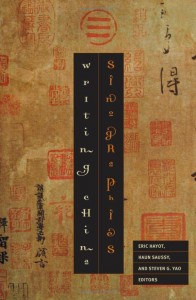This is a course in the history of prose fiction from the eleventh century to 1880. Among other things it aims to destabilize the category of the “novel,” and to ask whether the structure that would separate the novel from its predecessors can be justified on grounds beyond the ideological. Readings will come from a variety of novelistic (or para-novelistic) forms, including the monogatari, the romance, the picaresque, the xiaoshuo, the maqama, the historical novel, the epistolary novel, the fictional memoir, and the bildungsroman. We will also study theories of narrative and narratology, theories of genre, and theories of literary history. Readings from: Murasaki, Malory, de Quevedo, Al-Hamadhani, Rabelais, Cervantes, Richardson, Cao Xueqin, Sterne, Goethe, Scott, Sand, Balzac, Flaubert, Dostoyevsky, Machado de Asis, and others.
Download the Course Syllabus

